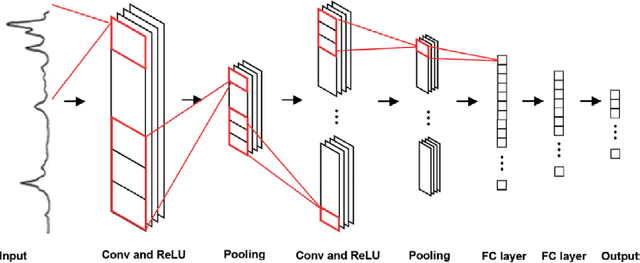A Review of 1D Convolutional Neural Networks toward Unknown Substance Identification in Portable Raman Spectrometer
Paper and Code
Jun 18, 2020



Raman spectroscopy is a powerful analytical tool with applications ranging from quality control to cutting edge biomedical research. One particular area which has seen tremendous advances in the past decade is the development of powerful handheld Raman spectrometers. They have been adopted widely by first responders and law enforcement agencies for the field analysis of unknown substances. Field detection and identification of unknown substances with Raman spectroscopy rely heavily on the spectral matching capability of the devices on hand. Conventional spectral matching algorithms (such as correlation, dot product, etc.) have been used in identifying unknown Raman spectrum by comparing the unknown to a large reference database. This is typically achieved through brute-force summation of pixel-by-pixel differences between the reference and the unknown spectrum. Conventional algorithms have noticeable drawbacks. For example, they tend to work well with identifying pure compounds but less so for mixture compounds. For instance, limited reference spectra inaccessible databases with a large number of classes relative to the number of samples have been a setback for the widespread usage of Raman spectroscopy for field analysis applications. State-of-the-art deep learning methods (specifically convolutional neural networks CNNs), as an alternative approach, presents a number of advantages over conventional spectral comparison algorism. With optimization, they are ideal to be deployed in handheld spectrometers for field detection of unknown substances. In this study, we present a comprehensive survey in the use of one-dimensional CNNs for Raman spectrum identification. Specifically, we highlight the use of this powerful deep learning technique for handheld Raman spectrometers taking into consideration the potential limit in power consumption and computation ability of handheld systems.
 Add to Chrome
Add to Chrome Add to Firefox
Add to Firefox Add to Edge
Add to Edge